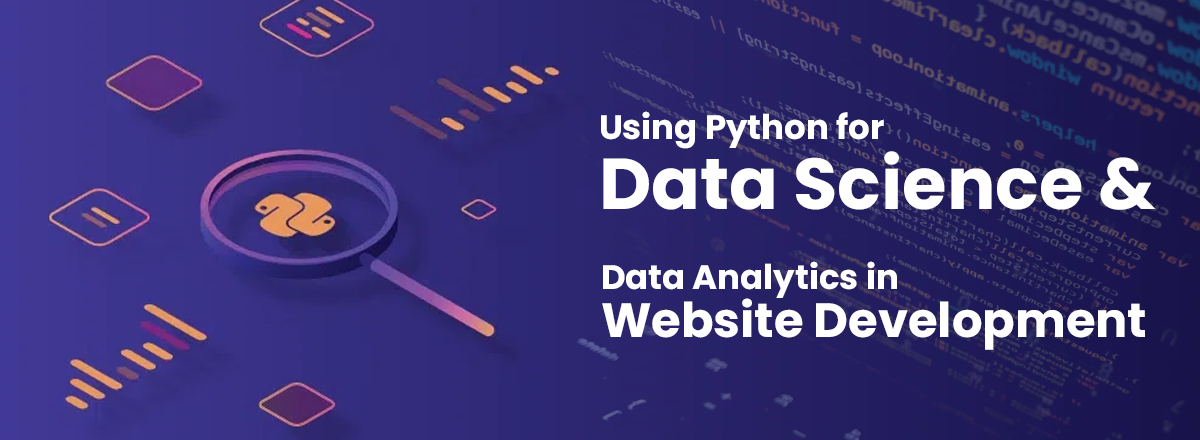Using Python for data science and analytics has gained immense popularity due to its versatility and the extensive ecosystem of libraries and tools designed for custom website development. Python, originally renowned for its readability and ease of use, has evolved into a pivotal language for handling, analyzing, and visualizing data, making it the preferred choice for data scientists and analysts.
To board on your journey in Python data science and analytics, it is essential to follow a structured roadmap comprised of several key steps:

The first step is to install Python on your computer with affordable website development service help. While you can download Python directly from the official website, many data scientists prefer using Python distributions like Anaconda. These distributions come pre-packaged with essential libraries and tools required for data science, streamlining the setup process.
Selecting the right Integrated Development Environment (IDE) offering cheap website development deals is crucial. Popular choices include Jupyter Notebook, JupyterLab, Spyder, and Visual Studio Code. These IDEs offer features such as interactive coding, debugging capabilities, and built-in support for data visualization, enhancing your data science workflow.
Before investigating into best website development for data science, it's essential to have a solid grasp of Python's fundamentals. This includes understanding variables, data types, and control structures like if-else statements and loops. Building a strong foundation in Python is crucial for efficient data analysis and manipulation.
Python offers a variety of data structures, including lists, dictionaries, sets, and tuples. Familiarity with these data structures is essential for data storage, retrieval, and manipulation.
Buy website development service with NumPy serves as the go-to library for numerical computing in Python. It enables efficient handling of multi-dimensional arrays, mathematical operations, and linear algebra. Pandas, on the other hand, specializes in data manipulation and analysis, providing data structures like DataFrames and Series for tasks such as data cleaning, transformation, and exploration.
Effective data visualization is a critical aspect of data science. Website development services online such as Matplotlib and Seaborn are indispensable tools for this purpose. These libraries allow you to create various charts, plots, and graphs, making it easier to identify patterns and trends in your data.
SciPy complements NumPy by offering tools for scientific computing and optimization. Meanwhile, Scikit-Learn stands out as a powerhouse for machine learning, providing an extensive array of algorithms for classification, regression, clustering, and more.
Proficiency in SQL and database management is essential for data retrieval and storage. Python libraries like SQLAlchemy facilitate interaction with databases, allowing for the seamless integration of data analysis and database management.
Data cleaning and preprocessing play a significant role in data science. Handling missing data, dealing with outliers, and transforming data into suitable formats for analysis are essential skills in this field.
To build a strong foundation in data science, delve into statistics and machine learning concepts. This includes understanding hypothesis testing, regression, classification, clustering, and more.
Applying your skills to real-world data science projects is crucial for practical experience. These projects not only reinforce your knowledge but also help you build a portfolio of work including brand identity design and a unique logo that can showcase your expertise to potential employers or clients.
A wealth of online courses, tutorials, and books are available to enhance your skills in Python data science. Platforms like Coursera, edX, and Udacity offer specialized data science courses taught by industry experts.
Engaging with data science communities, forums, and social media groups is invaluable for networking, seeking advice from experienced professionals, and staying updated with the latest trends, which are all essential for career growth in data science.
In conclusion, Python's application in data science and analytics is a dynamic and rewarding field. By following this comprehensive roadmap, you can unlock Python's full potential, enabling you to derive valuable insights from data, build robust machine-learning models, and make data-driven decisions that impact various industries and domains. Continual learning, practice, and participation in data science communities are key to mastering these skills and staying at the forefront of data science innovation.

